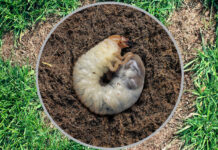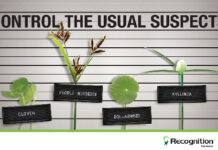The Protecting Pollinators in Ornamental Landscapes Conference that was co-hosted by Michigan State University Extension and North Carolina State University on Oct. 12-14, 2015, drew in almost 200 participants from 35 states and three countries. The conference brought a diverse audience including educators, academic researchers, industry scientists, beekeepers, greenhouse and nursery growers and students.
The mixture of participants provided for interesting discussion sessions on challenging topics such as what the appropriate regulatory restrictions on the economically-important neonicotinoid insecticides should be based on the current knowledge base. The leading researchers pointed out that while pesticide usage is not the primary driver of bee decline, it could be an aspect in a web of stress factors. This viewpoint is consistent with that of numerous organizations, including the United States Department of Agriculture and the Environmental Protection Agency.
Twenty-three educational sessions at the conference focused on the importance and function of pollinators to the ornamental landscape, the effects of pesticides on pollinators and how educators can begin engaging the public in the national conversation on pollinator health. Participants learned about the challenges facing pollinators by numerous speakers, including Dave Goulson, a professor at the University of Sussex in the United Kingdom, who emphasized that multiple factors are contributing to bee decline, including: decreased food sources and nesting sites, exposure to non-native parasites and diseases, and the exposure to pesticides.
Conference attendees also learned that in addition to the many factors influencing pollinator health, the acute toxicity of bees to different insecticides is an incredibly complex subject in itself. For example, Cynthia Scott-Dupree, professor and Bayer CropScience Chair in Sustainable Pest Management at the University of Guelph, presented on the acute toxicity of Apis mellifera and non-Apis bees (Bombus impatiens or bumble bees, Megachile rotundata or leafcutter bees, and Osmia lignaria or blue orchard bees) to five different insecticides (imidacloprid, clothianidin, deltamethrin, spinosad and novaluron). The four species of bees differed in their susceptibility to the different insecticides. For all species except O. lignaria, clothianidin was the most toxic. For two of the bee species (B. impatiens and M. rotundata), novaluron was the least toxic. The complexity of acute toxicities alone points out the challenges that regulators face in trying to develop broad policies to protect pollinators.
While there is mounting evidence that pesticide exposure does have some impacts on bees and other pollinators, other speakers at the conference pointed out the challenges with not using some of the systemic insecticides. Dan Potter, professor of entomology at University of Kentucky, pointed out neonicotinoid insecticides are the least expensive treatment for grubs in lawns of homeowners or golf courses. The neonicotinoid insecticides are extremely effective for the treatment of lace bugs, whiteflies, leaf miners, phyllids, aphids, scales and many more problematic insects of ornamentals. In addition, the uses of these systemic insecticides are less hazardous than spraying, especially for homeowners and landscape professionals.
Pete Nowak, professor emeritus at the University of Wisconsin-Madison, emphasized these points by sharing neonicotinoids case studies and surveys that demonstrated the value of the neonicotinoids to a variety of agricultural industries. In a survey of members of professional green industry organizations titled “The Value of Neonicotinoids to Turf and Ornamental Professionals,” 50 percent of greenhouses, 65 percent of nurseries and 68 percent of lawn care companies reported they would have reduced profits if the neonicotinoids were not used. Without the use of neonicotinoid insecticides, 66.9 percent of all survey respondents said they would see an increase in labor costs while 77.6 percent said they would increase insecticide applications. Therefore, the replacement of neonicotinoids with alternatives that might be more hazardous chemically and require more spray applications may have broad economic consequences on plant producers. The irony is that greenhouse and nursery growers do, after all, grow plants which can be food sources for bees.
Therefore, a compromise between all involved industries and stakeholders based on research-based scientific evidence is necessary in order to develop regulations and policies regarding insecticides. The Protecting Pollinators in Ornamental Landscapes conference was an essential first step in connecting researchers, educators and industry in order to share ideas and create new pollinator initiatives. Eighty-eight percent of post-conference evaluation respondents said they were going to continue or start an initiative to protect pollinators as a result of the conference, while 55 percent said the conference helped to develop a new research collaboration to fill in the knowledge gaps on pollinators. Ninety-four percent of participants expressed the information presented met their needs. Almost 70 percent of evaluation respondents said they would attend a similar conference again if hosted in two years.
The conference sponsors:
- Gold: Bayer CropScience, Valent, Syngenta
- Silver: Biobest
- Bronze: American Floral Endowment, North Carolina Nursery and Landscape Association
This article was originally published by Heidi Wollaeger, Michigan State University Extension.











![[VIDEO] Dickies®: Discover Workwear That’s Anything But Uniform](https://turfmagazine.com/wp-content/uploads/2023/06/1647663814-4b1a2a7742790a9b1e97a3b963477850192e1d6a9dfba9b07214a77bae25d6e3-d-218x150.jpg)




























![[VIDEO] Dickies®: Discover Workwear That’s Anything But Uniform](https://turfmagazine.com/wp-content/uploads/2023/06/1647663814-4b1a2a7742790a9b1e97a3b963477850192e1d6a9dfba9b07214a77bae25d6e3-d-324x160.jpg)